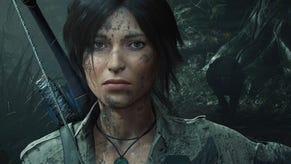Shadow of the Tomb Raider is a beautiful tech showcase
Every console version tested.
Spanning more than two decades and produced by a succession of talented developers, the Tomb Raider series almost serves as a barometer of progress in the space of 3D gaming. From its initial outings during the 90s, through its issues early in the PS2 generation right up to its most recent resurrection, the series has evolved and changed to meet the needs of each new era. Shadow of the Tomb Raider continues this tradition, presenting not just an evolution in technology - but subtle a shift in gameplay focus too for the rebooted series.
With Crystal Dynamics busy on its Avengers title, development duties for Shadow shifts to Eidos Montreal - the studio behind the most recent Deus Ex titles. Crystal is still involved as a support studio, but this is effectively an Eidos Montreal game. As it happens, this is a good thing for the title's technological credentials: Eidos Montreal has a lot of experience in engine development, having crafted the stunning Dawn Engine used in Deus Ex: Mankind Divided. This was a great match for a first-person immersive sim but with Tomb Raider it doesn't make sense to reinvent the wheel: Crystal's Foundation Engine returns then, this time with some new Montreal-developed augmentations.
That starts with image quality. Rise of the Tomb Raider is a beautiful game, but its basic post-process anti-aliasing could result in noticeable shimmering and pixel-popping, especially in foliage heavy scenes. With Shadow of the Tomb Raider spending most of its run time within dense forest areas, this wouldn't fly, so the team implements a new temporal anti-aliasing technique designed to clean up and eliminate shimmering across the game. It's extremely effective.
A key advancement involves the interaction of light and foliage. Basically, plants are now properly transmissive, meaning light passes realistically through leaves, while also exhibiting a realistic waxiness and specular sheen. Beyond that, the density of foliage is a huge step up from previous games in the series, with the gently blowing plants and trees greatly improving the general atmosphere. Shadow of the Tomb Raider also relies heavily on volumetric fog effects. A thick haze regularly floods across the scene, giving the impression of light scattering through the air.
It's a great implementation, but the most effective use of it stems from smoke cannisters Lara can toss to hide from enemies. This spawns a fog volume along with along with smoke particles that causes light sources, such as torches, to appear hazy when looking through the smoke. It's quite an impressive technique.
Then there is the texture detail - Shadow relies heavily on parallax occlusion maps and high resolution textures designed to add an extra level of realism to its physically-based rendering system. This is also true of Rise of the Tomb Raider, but I feel the material quality has improved significantly - so for example, the varying stonework on ancient temples is a real highlight, and even mud underfoot is beautifully rendered. Beyond the quality of the materials themselves, there are also pools of mud which appear more interactive. Utilising the deformation technique used in Rise for its snow rendering, Shadow of the Tomb Raider improves on this by simulating water running into mud trails as you walk through them. Procedural mud textures are also used on Lara's model - something which doubles as a game mechanic as well.
Water is another area that has improved significantly. Deploying stochastic screen-space reflections, there is a greater variation in reflection roughness and detail on the water surface, with reflections no longer appearing as a perfect mirror of the surroundings - and instead they are more closely matched to the properties of the water they're being reflected in. This is coupled with some nice cube-maps layered beneath the SSR. The water surface also receives a nice shader technique designed to simulate ripples as Lara swims through it - both her body and her limbs generate a realistic wake - in motion, it looks superb.
These are just a couple of examples of areas where the game has improved since Rise of the Tomb Raider but beyond the technology, the art direction also evolves. In line with the title of the game, Shadow of the Tomb Raider is a generally darker experience relying more heavily on shadowed regions. It's a more subdued presentation and one that I feel is a step up from the previous titles: everything is more nuanced, more lavishly lit and shadowed. The global illumination solution is likely the same as Rise's, but it's more aesthetically pleasing and less harsh overall. The issues with lower precision specular lighting evident in Rise has also been avoided for the most part, and aliasing on the 'shiny bits' is virtually non-existent. Basically, it feels like a nice evolution all around, but it isn't really a generational shift: there's simply been a full and frank evaluation of what worked and what didn't in Rise, with Shadow tidying up most of the major issues, while doubling down on more realistic lighting.
But do these enhancements come at a price? Well, rendering resolution takes a small hit on all but one platform. Rise of the Tomb Raider's 1080p on Xbox One (dropping to 1440x1080 in cutscenes) is now a uniform 900p on the standard console. Thanks to the excellent TAA solution, however, this isn't something to worry about - image quality is improved over the original game thanks to this new AA technique. It's a touch softer, as you'd expect, but preferable overall. Then there's the PlayStation 4 version, which delivers native 1080p - the only version to completely match its predecessor. Again, thanks to its TAA, it looks very smooth and slightly sharper. Overall, it's great news for base console owners - both games look great, and the major visual difference amounts to some extra clarity on the Sony platform.
Things get a little more interesting with the enhanced consoles, with both PS4 Pro and Xbox One X including high resolution and high frame-rate modes. As expected, performance is greatly boosted using the latter, where pixel-counts resolves at 1080p with image quality that's identical to the base PS4 game. We'll talk about performance momentarily, but the high resolution mode sees a small hit compared to Rise, which delivered 'true 4K' on X and a checkerboard equivalent on Pro. For Shadow, we're looking at 2016p on the Microsoft machine and 1872p on Sony's hardware. Pixel-counting this game isn't easy (and TAA lessens the importance of native resolution somewhat) but there remains the possibility of dynamic resolution in play here. That said, if it's dynamic, it's not dropping very often. In general, Xbox One X delivers a crisper overall image but in truth, all versions look great.
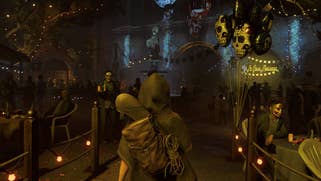
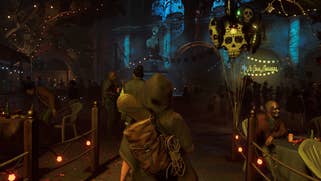

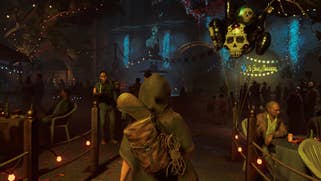
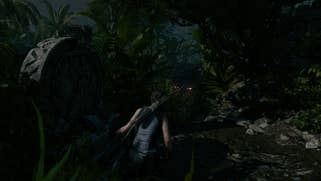
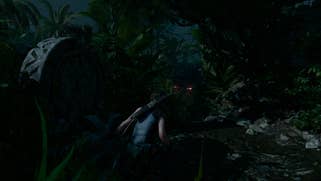
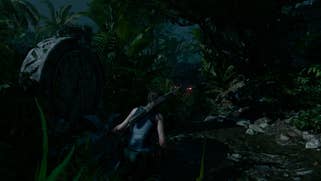
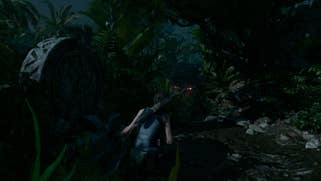



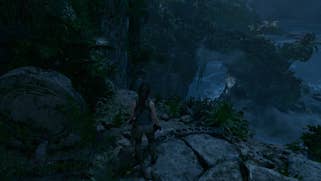
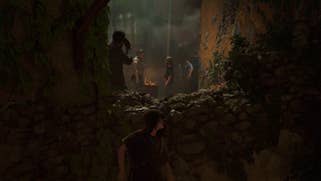
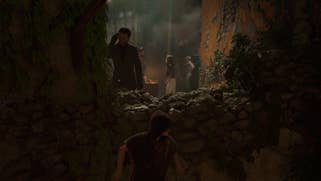
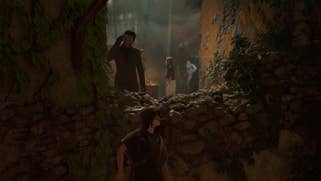

Beyond resolution, are there any other differences to consider? Well, the Xbox One X and PlayStation 4 Pro versions receive higher quality '4K' textures. The bump in texture quality is far more subtle than in Rise but honestly, texture work is great across the board and the higher resolution modes help bring out that extra detail in a big way. I also noticed a slight difference in colourisation between Xbox and PlayStation - something we also noticed in Rise. It's a little strange, but doesn't impact gameplay at all. The consoles also seem to implement 4x anisotropic filtering, which looks mostly solid in this game due to a distinct lack of flat surfaces. Overall though, this isn't a game where you'll find noticeable differences in quality between the various console options and that's not a bad thing by any means - this title is beautiful across all systems.
So, how about performance? On the base consoles, this is easy to answer - PlayStation 4 locks more closely to its 30fps target. Slowdown isn't completely eliminated, but it's very difficult to pick up. It's mostly noticeable on cutscene camera cuts, which can exhibit a noticeable stutter - something we hope Eidos Montreal addresses in a patch, as it seems to impact all versions. On Xbox One, performance is less consistent in scenes heavy in foliage or during action set-pieces. Xbox One has more pronounced performance drops, accompanied by screen-tearing that isn't present on PS4. The bottom line? PS4 is a touch crisper, but holds 30fps better and does so without any tear-lines, perhaps suggesting a triple-buffer v-sync solution. The improved visual feature set comes with a small hit though - neither PS4 nor Xbox One run as smoothly as Rise.
The tables turn somewhat on the enhanced consoles. In high frame-rate mode, PS4 Pro runs with the same kind of performance we saw in Rise - any kind of demanding scene sees a drop from the target 60fps and variable frame-times. And again, similar to Rise, I prefer the consistency of the higher resolution 30fps mode (which again super-samples down when the machine outputs at 1080p). By contrast, Xbox One X makes a really good fist of hitting and sustaining 1080p60. Yes, there are dips, particularly in foliage-heavy scenes and during intense combat, and yes, screen-tearing returns, but for the most part, high frame-rate works well.
High resolution mode sees a different state of affairs and the Pro holds 30 frames per second in nearly every scene I tested. It's still possible to trigger minor drops but overall it's a very stable 30fps turn-out. Xbox One X also manages to deliver 30fps in most scenes but I noticed minor dips occurring more often, with noticeable judder and tearing. Dynamic resolution scaling - assuming it's not already implemented - could definitely help here. Scenes that render at 1080p60 in high frame-rate mode can struggle at 4K, suggesting a GPU bottleneck. Still, even with this issue, I'd have to give the nod to Xbox One X as the best version overall: while the minor tearing is annoying in 4K mode, the extra sharpness is noticeable throughout and if you prefer a faster frame-rate, the X version excels there as well. That's not to say the Pro version disappoints - it's a really slick product - but Microsoft's console has the edge. It's just a shame that the enriched mode featured in Rise isn't available here as there is additional fidelity in the PC game that you can't access on consoles.
But as things stand, Shadow delivers some great features in addition to its beautiful consistency and stunning lighting. PureHair returns from Rise of the Tomb Raider - a little noisy at low resolutions, but the overall effect is convincing. Character rendering and cutscene quality is also top notch: everyone has a slightly different appearance for this new release, but facial expressions and cinematic animation are of a great quality, while plus the hexagonal bokeh depth of field is simply gorgeous in action. Cutscenes were a high point in Rise of the Tomb Raider and that remains the case here - for the most part. While major scenes are beautifully animated, secondary characters aren't given the same attention to detail and even basic conversations are fraught with limited movement and dead eyes. It's not great and definitely detracts from the presentation.
There's also less in the way of pre-rendered disaster sequences. Rise featured scenes such as the initial level's avalanche - impressive events that basically mixed real-time 3D with pre-rendered effects. This technique may still exist in Shadow of the Tomb Raider, but after playing a good way through the game, I haven't noticed anything similar. As for gameplay animation, the team has done a good job overall: most of Lara's moves smoothly transition and combine with one another, thanks to the animation layering system first devised for Rise of the Tomb Raider. While it generally looks good, there are instances where transitions aren't quite as smooth as I would have liked, so it can be a little hit or miss. At least the per-pixel motion blur has returned in full force and looks phenomenal without being distracting. It's most impressive when playing with the game's high frame-rate mode, especially during cutscenes, lending these sequences an almost pre-rendered look.
I should also briefly mention the HDR implementation - supported across all consoles bar the non-S standard Xbox One, Shadow of the Tomb Raider delivers one of the best examples of high dynamic range rendering I've seen in gaming to date - seriously, it's right up there with the likes of Gran Turismo Sport, and bolstered by a great level of HDR control in the settings menu. Put simply, it's another great reason to invest in a quality 4K HDR display.
But what of the game itself? The Tomb Raider reboot series has divided opinion but I've enjoyed the previous games and I'm really impressed with Shadow too. However, there is a noticeable difference in terms of pacing and flow. Basically, Shadow is much heavier on puzzle-solving and less focused on combat: there is still plenty of action and stealth of course, but it's no longer the focus. The puzzles themselves are often quite enjoyable to solve, with some complex mechanisms in play. This is familiar territory for the series but it feels a lot more elaborate this time around. The combat and stealth that is in the game still works nicely, though some of the faster enemies can be a little annoying in close combat scenarios. Basically, Shadow shares many gameplay elements with its predecessors but it has its own pacing and focus.
One thing that is a concern for us right now is input lag - back in the day, we ping-ponged between decent response and noticeable lag from one Rise patch to the next, but out of the gate, Shadow's response doesn't quite feel right. Hopefully Eidos Montreal can fix this in a title update, but I've spent the last week focused on this game and I'd say that if you have enjoyed the prior reboot titles, Shadow of the Tomb Raider is well worth a look - and from a technological standout, it's an absolute treat.










